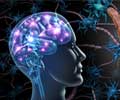The identification of more than 200 new proteins that interact with the mutated protein that causes Huntington’s disease
The identification of more than 200 new proteins that interact with the mutated protein that causes Huntington’s disease opens the door to developing treatments for the fatal neurodegenerative disorder, said a Baylor College of Medicine researcher who took part in the work that appears online today in the journal Public Library of Science Genetics.
BCM scientists actually determined which proteins among the list of more than 200 identified at Buck Institute modify the effect of the Huntington’s protein. The Buck Institute is located in Novato, California.Huntington’s disease is a devastating, fatal neurological disorder that affects an estimated 30,000 Americans. It is dominantly inherited, which means that if a person inherits a single copy of the gene from a parent, that person will develop the disease – usually in middle age. Children born to parents who go on to develop Huntington’s disease have a 50:50 chance of having the disease themselves. Musician Woody Guthrie was among its best known sufferers.
“Many of the proteins that interact with Huntington’s are modulators of its toxicity,” said Dr. Juan Botas, associate professor of molecular and human genetics at BCM and a senior author of the paper. “This could also be a way to look for and identify factors that modulate a number of proteins involved in other neurodegenerative disease.”
Modulating means that the interacting protein affects the deadly symptoms caused by Huntington’s, he said. Some of the interactive proteins might cause a person to develop the disease later; others could actually make the symptoms appear earlier or to be more severe.
“When you tinker with some of these genes, you find that some of them improve the symptoms. These could be potential therapeutic targets,” said Botas. “When you tinker with others, it makes the Huntington’s more aggressive. These might be ones that accelerate the age of disease onset. Not everyone with Huntington’s develops symptoms at the same age.”
Botas and his colleagues used a fruit fly model of Huntington’s to test the proteins’ effects.
Advertisement
Source-Eurekalert
LIN/V







